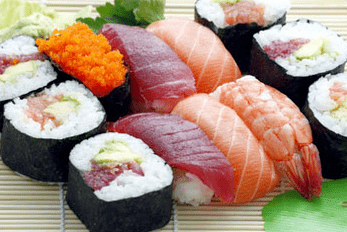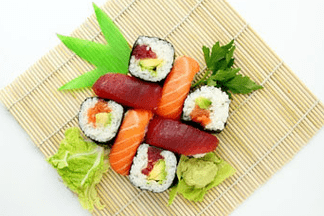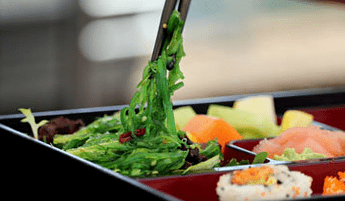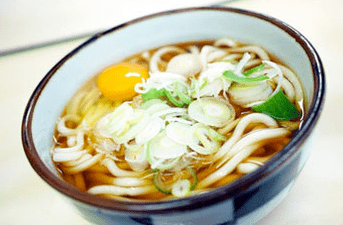The Japanese are still one of the world's worst people.The view of their diet shows why we can benefit this from this.
If we want to lose weight, we often start with strict diets, which then do not execute in a few days or weeks for all strict rules.In fact, it's so simple: Let's look at the worst people - in Japan.
They treat food out there with respect and enjoy it.

Japanese diet
Travel to Japan.Product selection
Muchsquirrel: The main ingredients of the Japanese diet are fish, rice and vegetables.Like soy and fruit.
By closer examination, this is like
- rich protein,
- low -fat
- And Diet Gluten -Free.
- FishIt contains a lot of omega-3 fatty acids that are useful.
- VegetablesThey contain the necessary vitamins and fill the stomach well.
- Don't be afraid of carbohydrate: At first glance, it seems to be with the ubiquitous carbon hydrate of FOBIA to eat an incredible amount of white rice in Japan.Obviously, this is not very harmful to the mana frae.RiceIt does not contain gluten and contains low fat.
- Soupand fermented dairy products.Yes they can barely in Japan isDairy products.
- AlthoughcerealSometimes they are used, for example, in the form of pasta, they are not the main food product.
- MeatEats much less than fish.
- But Japanese likeEnzymed productsLike Miso or Kimchi.Contain probiotics that are useful for intestines.That, in turn plays a big role in weight loss.And another thing we can adopt from Japanese: they eat a lot of soups even for breakfast.
Travel to Japan.Cooking methods
In Japan, food is generally steamed, gulas or grilled.All these types of preparations are spent almost fat-free.
Of course, of course, there is also fried food, for example, a popular pace, but then it is used as a side dish in small quantities.The presentation and design of dishes are also important in Japan.Asian products are useful, delicious and contributions to losing weight.
In Japanese to eat consciously
In Japan, food is considered independent actions where you need to concentrate.Food should be eaten slowly and consciously and enjoy it.Therefore, it is traditionally not eaten "by the way" or "go".It is, neither during a walk, nor in the subway, neither during work, nor when looking at television.Of course, this is not forbidden, but, in fact, diet, especially when losing weight, should be done consciously.This method of food absorption feels feeling of satiety.From the working day and school days in Japan, it can be very long, it also means that there are longer food pauses.AlsoPartsLess in Japan.You will not see a plate overloaded food.

Weight comes with fast food
SAINDING FOOD (SPARE FOOD)In Japan in Trend.If you imitate that, you can deliberately lose weight, not starve.However, it should be noted that in Japan, more and more appears from the west of new trends: fast food, for example.Previous habits in food disappear ...
This has consequences: Japanese also recover when they say goodbye to their traditional food!Still, the earth also struggles with quite difficult, Japan in 2009. took decisive measures against the causes of excess weight.Medical tests are regularly implemented in all municipalities and large companies.Companies should pay more for health insurance if their employees have excess weight or have high blood pressure, high blood lipids or increased blood sugar.Considering such measures, many Japanese people prefer to return to the miso-soup with a fish instead of nasts in the morning.
How long does the Japanese nutrition last?
Time and possible weight loss can vary.Japanese nutrition should be observed for at least four weeks.This is time enough to encourage the ignition of fat.There are people who have lost3to8Pound in four weeks with diet.The result can be increased even more if you start a sports program.
- A lot of vegetables and fibers are used during the diet.The diet plan provides1200 Caloriesa day.
- It is proposed mainly rice, fish and vegetables.
- Drink: lots of green tea and water.
- Watch out for fresh cooking - no finished products.
- To take sports or train to endurance.
- Plan enough time to cook.
Consult a doctor.- All changes in diet can lead to disease.The reasons are mostly mental in nature and due to small calorie spending.Consult your doctor if the symptoms are preserved.
Benefits of Japanese nutrition
Japanese diet- This is a healthy mixed diet.Much attention is paid to fresh products and balanced composition of dishes.
Disadvantages of Japanese diet
- Low calories consumption, it can cause a feeling of hunger and discomfort.For persons with excessive weight, total calorie consumption can be too low.
- Cooking fresh dishes can be tiring in the long run for those used to feed fast food.
- Spontaneous visits cafes or restaurants with friends are facing choice.
- Diet requires a lot of endurance.

But those who successfully finish the Japanese nutrition will be awarded more loss of excess weight.
If you want to see great success, make a sports program.Be sure to consume enough protein.Otherwise you can't increase muscle mass.In the worst case you will lose your muscles.It should be avoided by evil sports and other large loads.
Japanese nutrition.Me
All food should be fresh.The dishes are beautifully boiled, you can play with flowers.Food and enjoyment of food (slow food absorption) are also very important.
Breakfast
- 1 mandarin
- 1 cup of Miso.This typical Japanese soup gives a lot of energy, but it is weak fat.By the way, it consists of fish soups, Tofu, algae, miso (flavored strain of pastes) and green ports.The recipe below!
- 1 cup of green tea
Dinner
- 1 plate of land (raw fish with rice), with soy sauce
- A cup of a mushroom noodle
- 1 apple
- A cup of green tea
Dinner
- 1 part sashimi (eating other fish), soy sauce and basabi (be careful, this paste made of the damn is very acute)
- 1 cup whole rice grain
- 1 orange
- A cup of green tea
In addition, exercises are recommended (walking or riding a bike), as well as the pleasure of simple, smaller things.
And now about "good star times" - we make a trip on time, 1975. years
The Japanese are one of the healthiest people in the world with the highest long-term expectations, during which they remain harmful as a result of an exemplary diet.Currently, Nippon.com published a study in which justifies the reasons for the good health of Japanese with their diet.Nutritionists studied more than half a century in nutritional habits.Result:1975. year, Japanese culinary habits prices are at the highest estimates.
Why the Japanese diet from 1975 was considered a diet model
For decades, for decades, the Western world was influenced by the Western world, especially Western strengths to spread in the country, and they brought such diseases as atherosclerosis and diabetes.A study in which Japanese nutrition on mice tested for several decades - 2005, 1990, 1975. and 1960. years.
Result:Mice had the best health condition with a dietary plan in Japan since 1975. years.This group of mice had the lowest risk of diabetes and a healthy liver.
Cause:The average Japanese diet plant contained a large proportion of vegetables, fruits, algae and seafood in this particular year.In addition, in 1975. the diet prevailed with various methods of fermented spices and the greater variety of plants.In addition, the consumption of juices and sweet soft drinks at the time in Japan was not as common as today - both drinks are considered harmful to health in large quantities.
After the 48th, researchers found that mice, who launched Japanese diet from 1975. year, were older and had better memory than mice observed by a 2005 diet. Years.
But is it possible to convey these results to people?The study conducted by the Tokhoki University Study Committee, Japan, "Der Tōhok Uni Research Committee, Sendai, proved that 1975 diet has the same useful effect on people.And a group of participants who followed a 1975 diet in the 28-day period exceeded the indicators of those followed by a Food Plan 2005. Years.In the first group, Cholesterol was lower, as well as the risk of diabetes.Combined with one training three times a week, 1975 diets also reduced stress and increased endurance in the group of participants aged 20 to 30.Generally, diet in Japanese style can also help reduce levels of lipids in blood and visceral fat, which is considered harmful to health due to its metabolic activity.
Summary, we can say thatThe power of Japanese 1975Compared to modern nutrition in Japan - and typical for the West, food habits today are more useful in many aspects.This health style and nutrition reduce the risk of diabetes, long-term, cholesterol, reduces blood lipids and visceral fat, weight loss is positive side effects.

Diet from 1975. year, together with regular physical exercises, contributes to losing weight.
- Diversity:The daily menu usually consists of many small different dishes that are served with a soup and rice - instead of a great main dish.
- Preparation:The most popular three types of dishes prepared in 1975. years were cooked, pare or raw, also grilled.Freedom of heat and baking were used less often.This form of preparation has a consequence of the fact that the most important nutritional values are lost in warmth.For example, a fatty fish, like cod, contains important omega-3 fatty acids.After frying, the fish contains only one third of the initial fat in relation to raw fish, like Sashim.
- Ingredients:Diet from 1975. in particularly rich in strain products, seafood, tubers and green and yellow vegetables (including rninic), fruits, algae, mushrooms and green tea.Eggs, dairy products and meat have been spent in 1975, but only in moderate quantities.
- Spices:Instead of salt and sugar, soy sauce, vinegar and milo, fermented spices and fish soup were used.
Juha Miso- This is a Japanese national dish, it is prepared quickly and very aromatic.The main recipe contains very few ingredients - you can rich it as you wish.Miso-sup often eats for breakfast in Japan, but also as a bite or attachment.With filling, the soup becomes a main course.
As a basis for soup, you will only need two ingredients:
Mosopasta:This spicy paste consists of soy and - depending on the varieties - different cereals, such as rice or barley.The ingredients are salty and fermented in barrels with the help of such a coji mold.There are bright and dark, sweet and sharp miso pastes.So, the selection of varieties has a great impact on the taste of the Miso Soup.The meshopast is considered very useful because it contains probiotic milk bacteria formed during fermentation.Dasha:Japanese fish soup is prepared from the combat fight against seaweed and dried bonito flakes (a type of scooter or tuna: "Katsuo-Bushi" - "Katsuo-Busi").If you want to cook a MISO Vegetarian soup, you can use dried shiitaku and, possible, mushrooms or enocks instead of bonito flakes.
Miso Soup: Basic recipe
For four small portions of Miso Soups, you will need the following ingredients:
- 750 milliliters dasha
- about two or three tablespoons of miso-pasta
Use Miso-Post of your choice: In addition to soy, Shiro-Miso contains rice and has a rather soft and sweet taste.Darker varieties Miso, like Genmai or Dicho Miso, seasoned.
How to cook Miso soup
-
Heat Dasha's Broth - but not cooking.
-
Skip a miserway through a sieve and mix well with broth.First, use only a part of the quantity, because Pasta Miso has a very salty taste.Try the soup and then add more to Miso paste, if necessary.
-
Add ingredients by your choice in the wrong SUP in a few minutes before serving.Serve a finished soup in a bowl.By the way, in Japan, the soup is eaten with food sticks, and then the soup is drunk from the cup.
Prescription Miso Soups: Additives and Spices
You can prepare different ingredients for your soup.In Japan, a lot of attention is paid to the fact that the ingredients are evenly cut - so the finished soup looks very beautiful.Here are some examples to enrich your Soup Miso:
- Cooked rice or pastes (for example, dog noodles)
- Tofu sliced with cubes
- Bow or green onion, cut into thin rings
- Mushrooms, finely chop
- Kohlrabi, fine chop
- Snow section
- List Spinach, Park Choi or Mangold
- Fried vegetables such as broccoli, pepper or carrot

Although the mice soup is very sharp alone, it can be seasoned with several spices.For example:
- soy sauce
- A little like a limet
- Japanese Wostershire SOS
- Several drops of sesmic oil
- A little powder of ginger and / or chili peppers.
- You can also express a fresh ginger and / or pepper in thin slices and go to soup.
Tip:For many ingredients, you will need to go to Asian shop, but in regional markets you can buy fresh onions, mushrooms, cochlabs and co.
Tofu and other soy products are now produced in other countries.
JapaneseEat:
- Rice, fish (raw and boiled), vegetables, all and algae
- Small portions
- Various foods (up to 30 different daily)
- For breakfast soup, fish, rice, vegetables
- Fresh seasonal raw products
They almost don't eat desserts don't eat bread
Drink mainly green tea
Not fried in oil, use just little vegetable frying oil
They go and move a lot on a bike
Top three products
Rice / Fish (Alga) / Soy (Tofu)
Drink: green tea
And another secret from Japanese
Do you want to become a thinner at 12 cm waist?- If so, do the next respiratory exercise!
Important!
- Perform everyday!
- Perform before breakfast!
- Never rush!
- The footers set each other at a convenient distance.The knees are, of course, "Look" forward.
- Scroll the body weight on your back leg, correct the front.
- Inhale for 3 seconds.
- Exhale in 7 seconds.Relax your muscles.Break your hands.
Exercise performs at the beginning of 3 minutes, then increase the time for 10 minutes.














































































